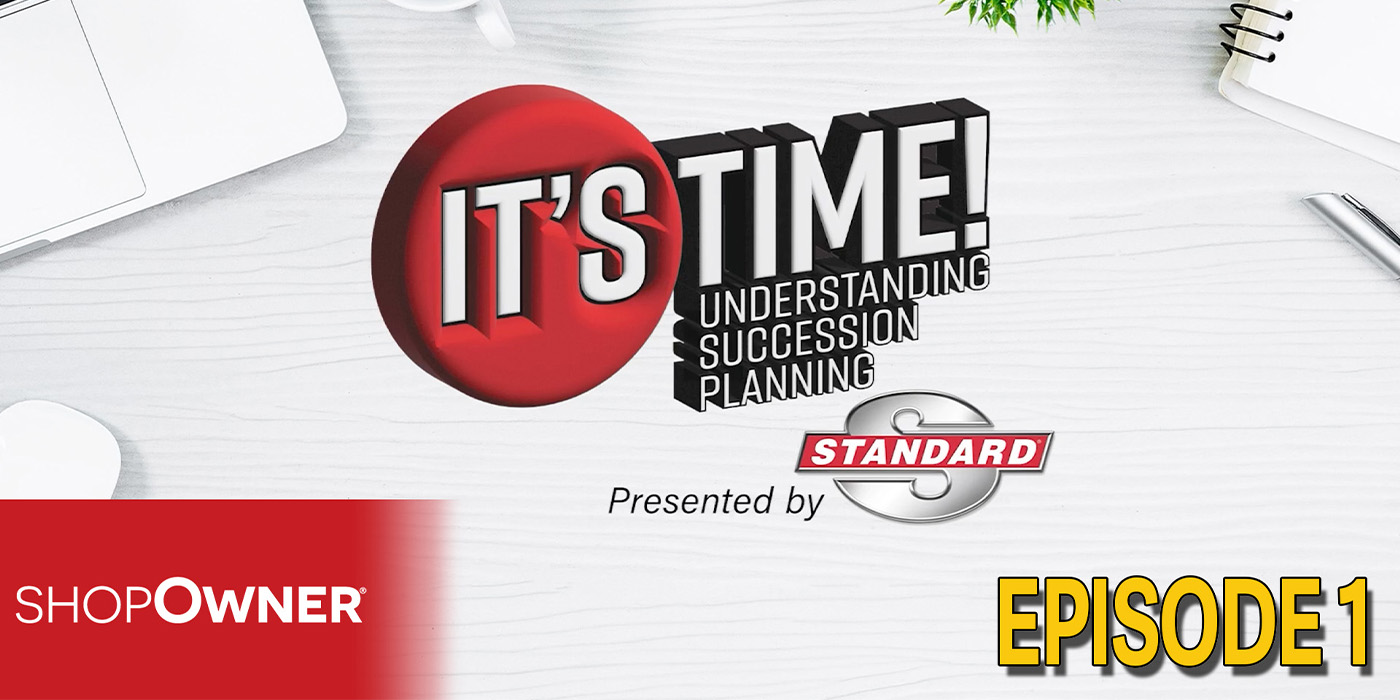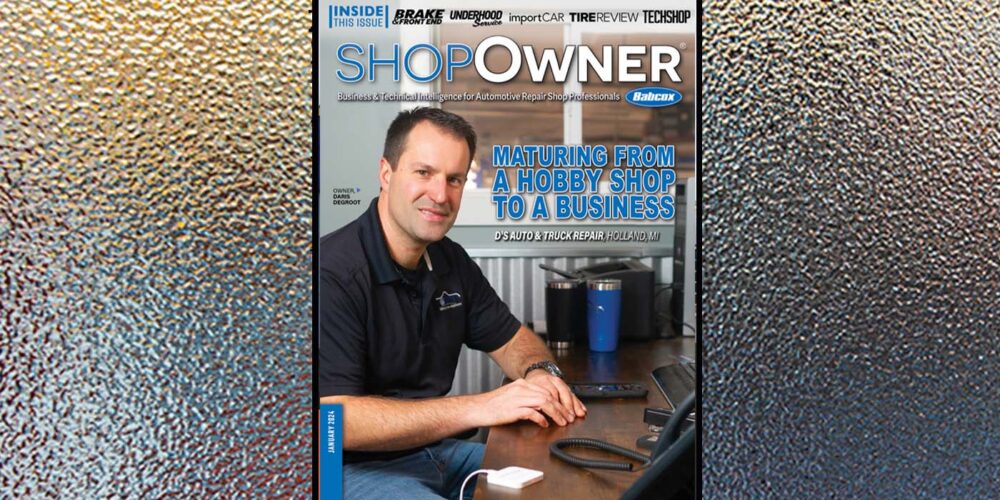In a perfect world, small businesses would have enough capital to fund any renovation or new construction project they wished to pursue. Buildings would never be run down, shops would use the latest equipment technology and operating space wouldn’t be an issue.
But this isn’t a perfect world. Construction costs can add up quickly, and not every small business has enough free capital to fund a project without bank financing.
According to banking professionals, there are almost as many small-business loan options as there are financial institutions. With a range of options, applying for a real estate/construction loan can be overwhelming. Yet, it’s important for shop owners who are looking to renovate a location or build a new shop to understand their financial options as well as what it takes to secure a loan.
“Know your financing options for real estate,” advises Jim Seitz, communications manager for small business at Wells Fargo. “Talk to your banker. Do your research. Have that conversation with the banker to find the best option for you and your business.”
One route business owners have for financing a construction project is a Small Business Administration (SBA) guaranteed loan. However, businesses may also opt to work with a bank without SBA backing.
Types of Loans
Scott Wolffis, director of business banking at Huntington Bank, outlined a few loan options that are available to small-business owners. Options include a conventional 15- to 20-year real estate mortgage, a small-construction loan, an equipment loan, a draw period and even an interest carry on a loan.
“What we really try to do is tailor loan options toward the customer’s needs,” Wolffis shares. “If they are just doing some storefront changes, we’ll probably just provide them with an end loan. But, if they are doing a ground-up construction starting from scratch, we’ll provide a longer-term construction loan and an end mortgage for that as well.”
An interest carry on a loan or a loan with a draw period allows businesses construction flexibility. An interest carry allows the interest to be built into the loan so a business doesn’t have to pay interest right away, while a draw period lets a business work on construction in increments, Wolffis says.
“Let’s say for example you have a shop owner who wants a $100,000 loan, but construction might have an impact on the customer’s ability to walk into the shop and the ability for sales during that time,” he explains. “We might do an interest-only draw period if they don’t need all the funding right away. They’d be taking the loan in small increments at a time. They may need $10,000 here and $20,000 there as they do the improvements. That way, they’re not paying interest on the whole thing up front.”
If a small business chooses to get an SBA-guaranteed loan, there are two different financing options available: CDC/504 and 7(a).
A 504 loan can be used for the land and building purchases as well as for the construction of new facilities. It can also be used for renovating existing facilities and purchasing equipment, according to the SBA.
“The 504 program is really a great program from the standpoint of the bankers,” shares Gil Goldberg, district director of the SBA’s Cleveland office. “What we do with the 504 program is usually take a second lien and the bank takes the first lien.”
According to Goldberg, a 504-backed loan can mean a lower down payment for a small business.
“So, if you’re looking at a $100,000 deal…the borrower comes up with $10,000. Most of the time if a bank is doing a real estate deal, it would require the borrower to put in much more than $10,000. They might require $30,000 or $40,000,” he says.
A 7(a) loan can provide long-term working capital that can be used to pay operational expenses, accounts payable and purchase inventory, according to the SBA. Additionally, this funding can be used to purchase real estate and equipment, and to establish a new business or expand an existing business.
“A 7(a) loan typically works very well if there’s an existing business and they wanted to do a small building expansion or add a few pieces of diagnostic machinery, and then hire three or four additional people — which would be considered more working capital than real estate-related planned expansion,” Goldberg explains.
Last year alone the SBA supported more than 69,000 loans totaling $28 billion, said Goldberg.
“The greatest advantage to an SBA-backed loan is that by guaranteeing a loan, SBA reduces the risk for the bank making that loan, and, therefore, the bank may lend in circumstances when it might not normally do so,” he says.
The banks agree that SBA-secured loans can help small businesses.
“Some transactions and loans that are borderline — where we might not have quite enough collateral — the SBA allows us to do that loan. It gives us a little backing in that regard,” Huntington’s Wolffis says.
“Let’s say the appraisal came back lower on a property, we can still do a loan for that customer because we have the SBA backing,” he elaborates.
The bankers also note that an SBA-secured loan offers other benefits for the small business as well. The length of a loan’s terms could be increased, the small business could secure a fixed rate and businesses would need to provide less cash up front.
“SBA loans really offer a number of benefits for a borrower,” Wells Fargo’s Seitz says. “Some of those include reserve cash if you don’t want to put a large down payment. Another advantage of an SBA loan is if you have a shortfall of collateral to secure a loan or you need a longer term.”
Seitz also notes that an SBA-backed loan offers small businesses the flexibility to combine real estate, renovation and equipment financing into one loan.
There are several requirements a business must meet to be eligible for a CDC/504 or 7(a) loan. The SBA does not provide loans; loans are brokered through a certified development company and bank. For full program eligibility, visit your local SBA office or sba.gov/loans-grants.
Before You Apply
There is a lot of prep work a small business can do prior to applying for a loan.
“Prepare as much information as you can get up front and have it ready to go. That makes it much quicker to sit down with a banker prior to the loan process,” Wolffis advises.
First, a small business should get its financial information together and correct any problems that exist.
“You want to get your financial house in order,” Seitz says. “Check your business and personal credit profile. You want to correct them before you apply. You also want to make sure you gather all of your business records, tax returns and financial statements.”
There are three major U.S. credit bureaus that compile business credit scores: Experian, Equifax and Dun & Bradstreet. Just like personal credit profiles, businesses are able to access these scores for free annually.
There are a few major things banks look at when it comes to a business credit profile: the amount of credit a business is using, the amount of credit still available and the debt load.
“In general, we encourage business owners to build a credit profile before they need credit. In some cases, businesses may seek credit after they are facing a business challenge, which could affect their credit profile and make their credit application weaker,” Seitz shares.
Wells Fargo offers a “Business Credit Center” at www.wellsfargoworks.com for all small-business owners to help them manage their credit.
In addition to getting the business’s finances together, Wolffis suggests having a clear picture of the project.
“A business should have a scope of the project they want to work on. If they know they’re going to do $20,000 in renovations, they should have a budget for that. Lay out what’s going to happen there,” he shares. “They should really think about what type of monthly payment will fit into their budget, too.”
Both experts suggest talking to a banker sooner rather than later.
“Talk about your credit need with the banker well before you need the money. That gives you time to weigh your options and really prepare the best application. You want to be able to apply when your finances are at their strongest,” Seitz says.
“Get to your banker early,” Wolffis advises. “Recognize that the bankers are there to help and that they want to help. They’re invested in making the process work.
“It doesn’t hurt to go in and talk to the banker beforehand and have a conversation about their project,” he continues. “We might be able to provide them with additional resources.”
Wolffis says the bank can help small businesses get a second opinion on construction costs and appraisals, as well as help facilitate a meeting with an SBA specialist, among other things.
“We try to help them along that process because renovations and construction can be tricky if you haven’t done it before,” he says.
If a business is applying for an SBA loan, the owner may also need to prepare a business plan.
Businesses needing extra help preparing a plan or gathering finances can visit an area SBA SCORE office for free assistance.
Applying For the Loan
Seitz says there are some key topics a small business should come prepared to discuss when applying for a loan, like how a loan will be used. Second, the business should be able to discuss its credit history.
“Every lender is going to want to work with a business owner who pays their obligations on time and has good vendor relationships,” he says.
The last thing that’s looked at is company finances, Seitz continues.
“You want to demonstrate your ability to repay a loan on time. That’s particularly important for an unsecured or larger loan,” he says. “It’s really a good idea to provide cash flow projections for at least a 12-month period that’s going to show you’re on top of your finances and help you account for seasonal variations in your business.”
Seitz also stresses the importance for a small business to complete an application in detail. A typical application will include, but is not limited to: personal financial statements, personal tax returns, business tax returns, an interim business financial statement, construction budgets and a business plan. Depending on the loan size and amount, banks may request more information.
“If it’s a larger loan, we’re going to want to know who the builder is,” Wolffis says. “We will want to know who is going to do the renovations and want to make sure we’re qualifying the builder for the customer.
“One of the challenges with construction is you get into a project and there are costs and overruns that the builder didn’t foresee, and you run into all sorts of problems. So we try and stop that before it happens by making sure the builder has a strong reputation and is qualified to do the job,” he continues.
If a business is applying for a guaranteed SBA loan, the small business will have to follow the set of SBA application guidelines. It will have to fill out SBA Form 1919, Form 912 and Form 413. Additionally, the business will have to provide financial statements, ownership and affiliations, a loan history and a business overview, among other criteria.
A complete checklist for SBA loans can be found on the SBA website.













